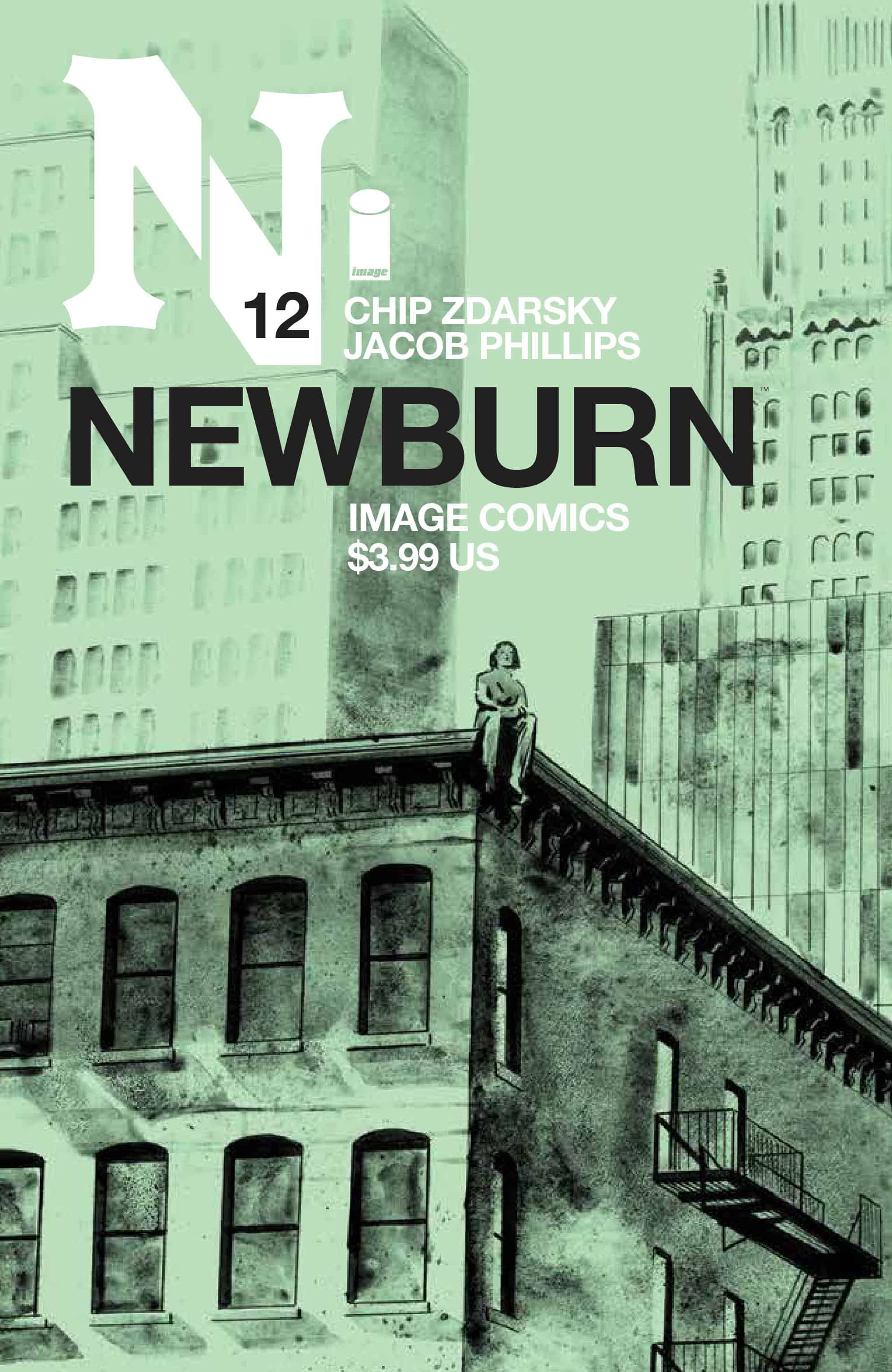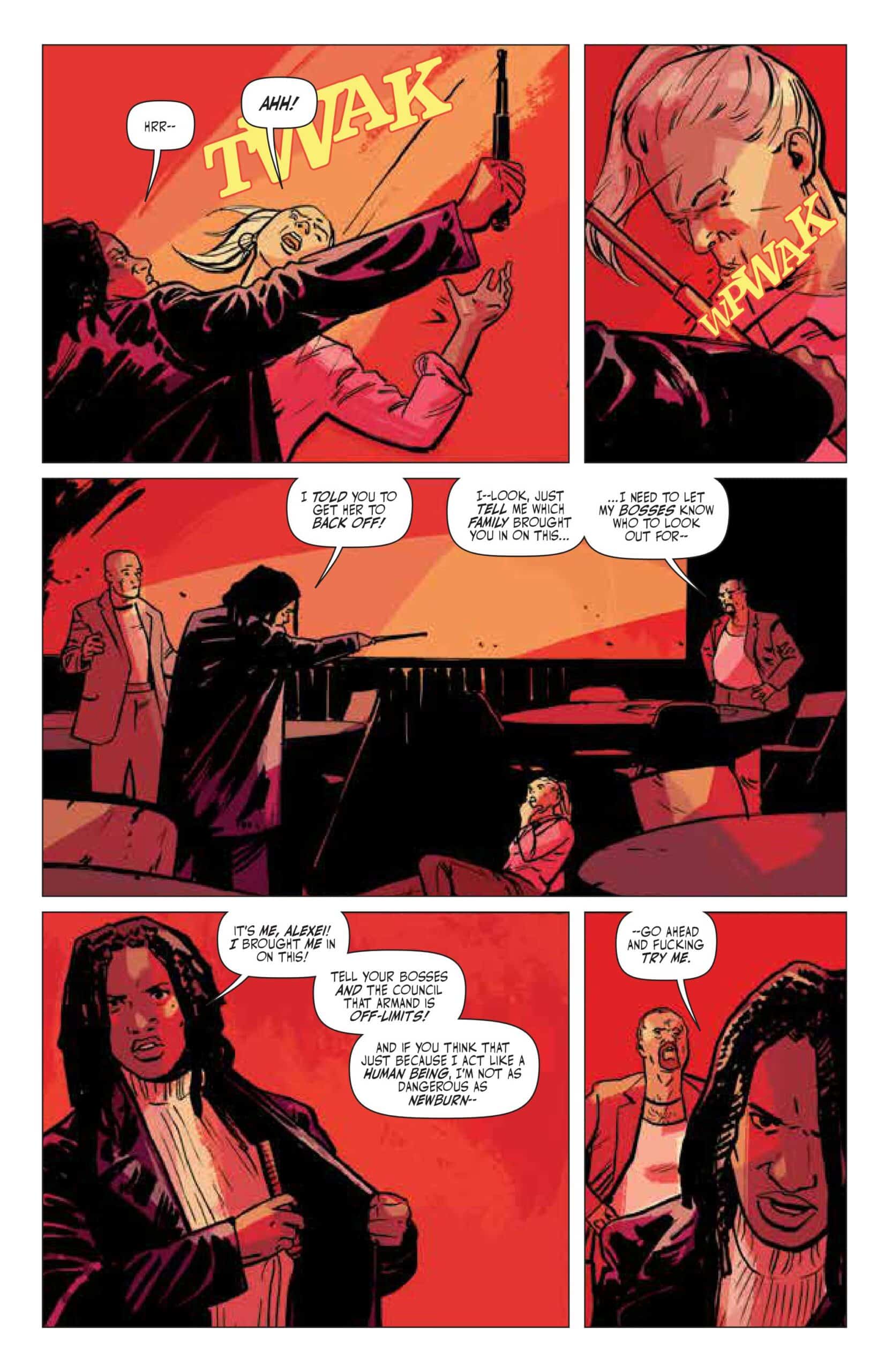Newburn #12

Recap
Emily goes back to school for a deadly investigation and runs into the last person she wants to see.
PLUS: In "GO BACK" by DRAGOTTA & BROTHERS, the kid finds a brief moment of peace and camaraderie before asking his boss for a favor.
Review
In crime fiction, there’s nothing more compelling than a character (on either side of the law) with their back against the wall. The backing into a corner makes them more desperate, resulting in the most narratively fascinating actions, not necessarily the most logical. Desperation and obstructions enrich conflict and characters, and a book like Newburn thrives as its lead characters get backed further and further to the wall.
Newburn #12 – written by Chip Zdarsky with art, colors, and letters from Jacob Phillips, and color assists by Pip Martin – pivots and gives Emily the spotlight again, playing on previously established bits of her backstory from issue six. That installment saw the young woman’s fall from the police academy and a flawed relationship with a small-time criminal, Armand. He’s returned after picking up what he thought was a low-risk gig, stealing report cards from a school. Instead, it put him on the radar of the Black Council, along with a death sentence.
While Emily investigates the reason for the hit on Armand, Newburn digs deeper into the Triad after the last issue’s case. He knows the threats around him are only getting more dangerous, and in his tired way, he is looking out for Emily by refusing to help with Armand’s issues. The two plotlines sync up at the end of both investigations with a literal bang, as Newburn is shot protecting Emily on the street. The book ends with a clear message to the detective duo as the criminal element is ready to strike against them.

Zdarsky’s script does an excellent job of infusing a new life into the issue by returning to Emily’s perspective. It’s a pivot in the typical structure that develops the character’s already complicated history while creating additional fissures in her relationship with Newburn. There’s a tense but effortless back and forth between Emily and Armand, revealing the pain and tenderness of the long-past romance. It’s easy to see why they never worked out, but like any good doomed romance, an evident passion makes the long past relationship seem bittersweet.
Wrapping the relationship drama in the mystery of the stolen report cards also makes for an excellent scaffold to hang the complicated past. That allows Zdarsky to play up the school angle, providing an opportunity to reflect on the past’s simplicity and the present’s complexities. That mystery is straightforward, sometimes a strong suit of procedurals, as the structure gives way to other elements like the characters or form. Here, Emily shows how much she’s grown and developed working under Newburn, letting the investigation serve her growth from cop in training to criminal detective.

Meanwhile, the plot thrives in the shorter Newburn section of the issue as Zdarsky progresses the core storyline of the growing threats to the detectives. The senior detective crosses the Triad off his list of problems to handle as he confides in his driver, Henry, that the wolves are circling. Foreshadowing the latter half of the issue and beyond, this small moment showcases the range in Newburn’s personality. One second, he’s aware of his situation, proving his philosophy of knowledge and leverage as power, while the next second, he’s ready to admit that danger might be more than he can handle.
That complexity of character is solid enough on paper but is elevated through Phillips’s facial expressions and emotional clarity. Every layout in this issue puts the characters front and center, no matter if it’s a dialogue or action beat. This creates an effect that overtly humanizes these characters, especially Emily and Newburn, who have thrived under the complex multitudes that Phillips’s linework has imbued. That, combined with the formal layouts, creates a steady rhythm that only gets more oppressive as the book continues, keying readers into the desperation starting to seep into the lead’s minds.

Beyond that emotion, the linework moves from quiet discussions to explosive action later in the issue. First, Emily’s quick show of force in the Bratva club sells her capability to exist in this criminal underworld. The moment is brief, only taking up two of the five panels on the page. It’s paired with a bright red background and yellow SFX, creating a shock of violence that seeps into the subconscious. The final attack on Newburn and Emily is another flash of violence that Phillips renders with absolute clarity, thriving in that tight panel placement. That moment uses a similar color scheme of red and yellow and only takes up two panels, just the first. That echoing effect shows the two sides to the violence and how both sides of the conflict can make a physical threat.
Surrounding those flashes of red is a beautiful series of pinkish-blue hues that Phillips uses to contrast against the darkness of this world. In both Newburn’s conversation with Henry and Emily and Armand’s final talk, the coloring is used to show the softer sides of both detectives. With Newburn, the city’s blue, lighter orange, and reds around cast an ethereal hue over the man’s face as he reflects on the approaching danger. In the scene with Emily, the palette diverts to a pink that infuses a sense of sweeping romance between the detective and her ex, which goes in a quick beat. The hue passes just as quickly as the sense of a win for this issue, and Phillips makes clear that even in the darkest of times, moments of true beauty can still exist.
Final Thoughts
With Newburn #12, a new wrinkle in the status quo of the criminal’s private detective makes for an excellent pivot as Emily revisits her past. The scripting for the issue forefronts character, letting the mystery take a backseat as detectives and their respective fears and doomed loves take center stage. The compositions and layouts build on that emotional core, highlighting what makes the book such a compelling read month to month. The linework pairs perfectly with the coloring to bolster both the bittersweet romance and explosive action to showcase the book’s range, selling the shift from breezy victory to desperate corner. Newburn continues to deliver high after high, proving itself to be one of the most consistently rich crime dramas on shelves.
Newburn #12: When the Wolves Close In
- Writing - 10/1010/10
- Storyline - 10/1010/10
- Art - 10/1010/10
- Color - 10/1010/10
- Cover Art - 10/1010/10





